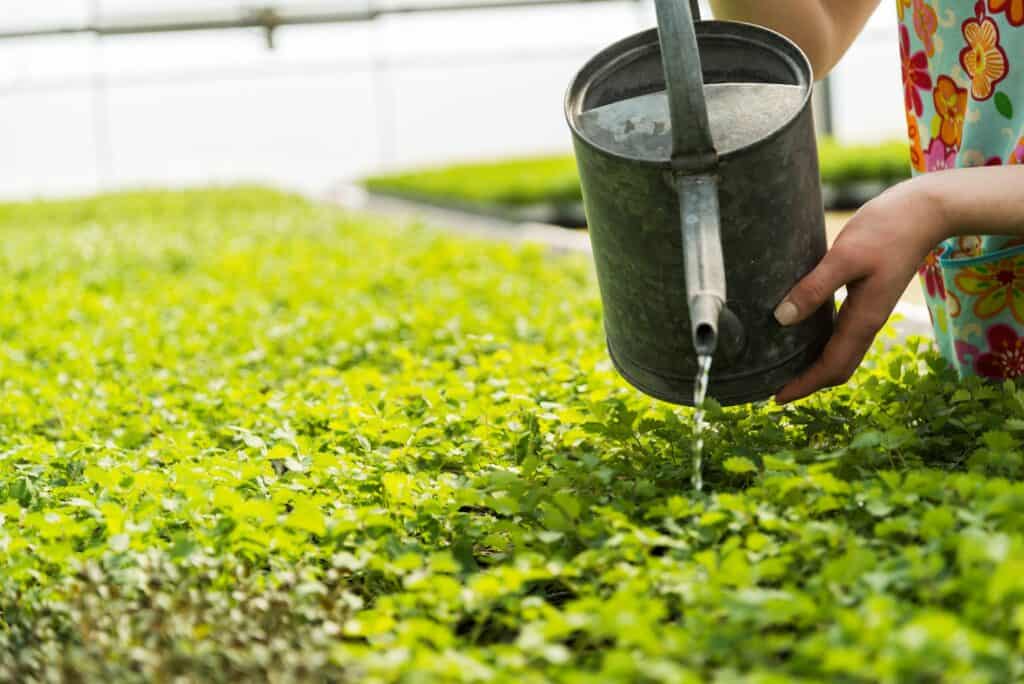Plants require water to survive and grow. However, determining the right amount of water to give to plants can be a tricky process.
Overwatering or underwatering can lead to stunted growth, root rot, and even death. For those growing plants in 5-gallon containers, the question of how much water to give to the plants is a common concern.
Understanding plant water needs is essential for providing the right amount of water to plants in 5-gallon containers.
The amount of water needed by plants depends on several factors, including the type of plant, the size of the container, the type of soil, and the surrounding environment.
While some plants require more water than others, most plants need about an inch of water per week.
However, this is just a general guideline, and the amount of water needed by plants can vary depending on the factors mentioned above.
Key Takeaways
- The amount of water needed by plants in 5-gallon containers depends on several factors, including the type of plant, the size of the container, the type of soil, and the surrounding environment.
- Overwatering or underwatering can lead to stunted growth, root rot, and even death in plants.
- To ensure healthy growth, it is essential to understand the water needs of plants and provide them with the appropriate amount of water.
Learn more about plants and waters in the below articles:
How Long Can Outdoor Plants Go Without Water?
Can I Water Plants with Stagnant Water? 7 Important Considerations
How Long Do Succulents Survive Without Water?
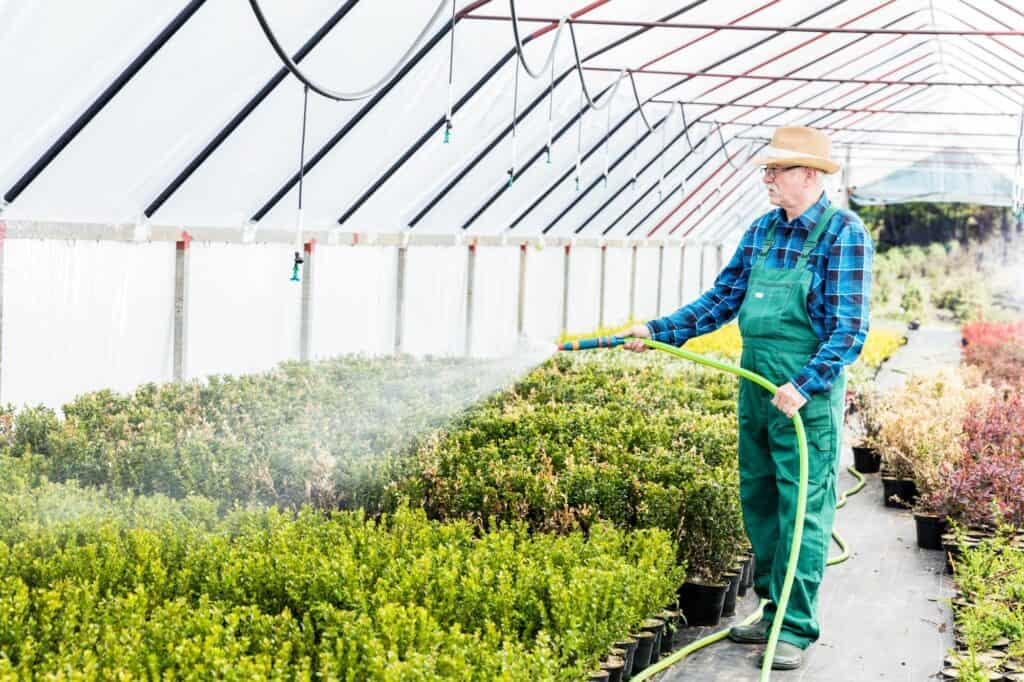
Understanding Plant Water Needs
Plants require water to grow, but the amount of water they need varies depending on several factors.
Understanding these factors can help you determine how much water your 5-gallon plant needs.
Factors Influencing Water Needs
Species
Different plant species have different water needs. For example, succulents and cacti require less water than other types of plants because they have adapted to survive in arid environments.
On the other hand, ferns and tropical plants require more water because they grow in humid environments.
Climate
Climate also plays a role in determining how much water a plant needs. Plants in hot, dry climates require more water than those in cooler, more humid climates.
For example, a 5-gallon plant in the desert may need to be watered every day, while a 5-gallon plant in a rainforest may only need to be watered once a week.
Indoor vs. Outdoor Plants
Indoor plants typically require less water than outdoor plants because they are not exposed to the elements.
However, the type of indoor environment can also affect a plant’s water needs. For example, plants in air-conditioned rooms may require more water because the air is drier.
Plant Size and Age
Larger plants generally require more water than smaller plants because they have more leaves and a larger root system.
Similarly, younger plants require less water than mature plants because they have smaller root systems and are not yet fully developed.
Soil Type
The type of soil a plant is growing in can also affect its water needs. Soil that is rich in organic matter can hold more water than sandy soil, which drains quickly.
Understanding the factors that influence a plant’s water needs can help you determine how much water your 5-gallon plant needs.
By considering the species, climate, indoor/outdoor environment, plant size and age, and soil type, you can provide your plant with the right amount of water to help it thrive.
How Much Water for a 5 Gallon Plant
When it comes to watering a 5-gallon plant, it’s important to understand that the amount of water it needs can vary depending on several factors such as soil type, plant species, humidity level, and temperature.
However, as a general rule of thumb, a 5-gallon plant needs about 1-2 gallons of water per watering session.
It’s crucial to ensure that the soil is moist but not waterlogged. Overwatering can lead to root rot and other fungal diseases that can harm the plant.
On the other hand, underwatering can cause the plant to wilt and eventually die.
To determine if the plant needs watering, it’s recommended to check the soil moisture level regularly.
Stick your finger about an inch deep into the soil, and if it feels dry, it’s time to water the plant. However, if the soil feels moist, it’s best to wait a few more days before watering it again.
It’s also important to water the plant deeply to encourage root growth. Instead of watering the plant a little bit every day, it’s better to give it a good soak once or twice a week. This will allow the water to reach the roots and promote healthy growth.
In addition to the amount of water, the quality of the water also matters. Using tap water that contains high levels of chlorine or fluoride can harm the plant.
It’s best to use filtered or distilled water that is at room temperature to avoid shocking the plant.
Watering a 5-gallon plant requires a delicate balance of providing enough water to keep it healthy without overwatering it.
By regularly checking the soil moisture level and watering deeply, the plant can thrive and grow into a beautiful addition to any garden or indoor space.
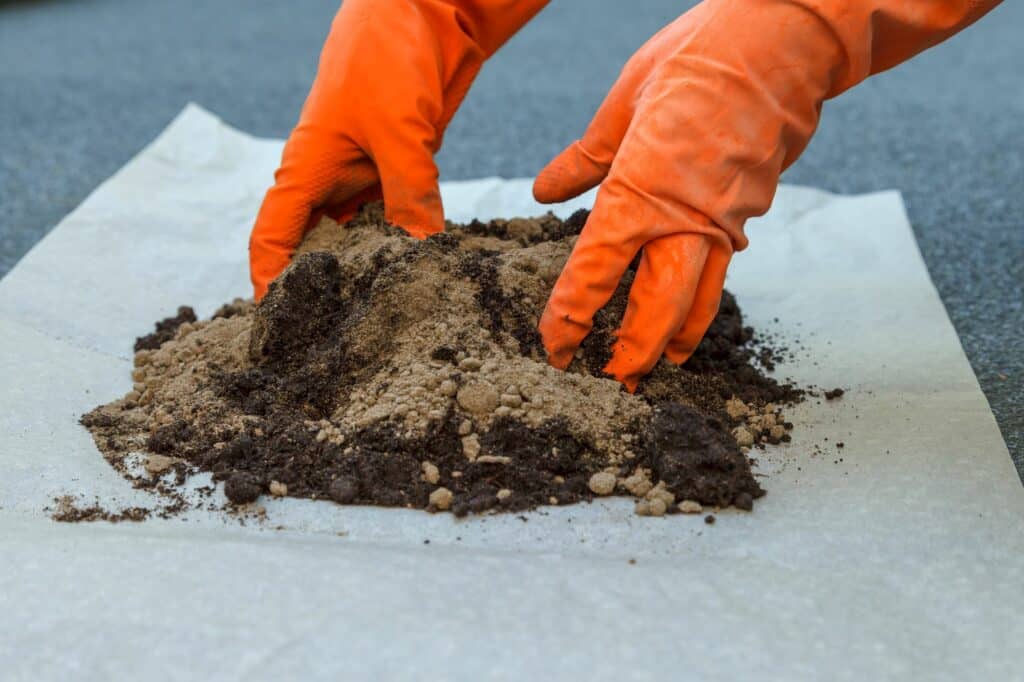
The Importance of Soil and Drainage
Proper soil and drainage are essential for the healthy growth of cannabis plants in 5-gallon pots. The right soil mix and adequate drainage can ensure that the plants receive the right amount of moisture and nutrients.
In this section, we will discuss the importance of soil and drainage in growing cannabis plants.
Choosing the Right Soil Mix
Choosing the right soil mix is crucial for the growth of cannabis plants. The soil should have the right balance of nutrients and moisture-retaining properties.
A good soil mix for cannabis plants should have:
- Good drainage: The soil should have a good drainage system to prevent waterlogging and root rot.
- Adequate aeration: The soil should be light and airy to allow for proper root development.
- Balanced pH: The soil should have a pH level between 6.0 and 7.0, which is optimal for cannabis growth.
- Nutrient-rich: The soil should be rich in nutrients, including nitrogen, phosphorus, and potassium.
One popular soil mix for cannabis plants is a blend of peat moss, perlite, and vermiculite. This mix provides good drainage, aeration, and nutrient retention.
Ensuring Proper Drainage
Proper drainage is essential for the growth of cannabis plants. Poor drainage can lead to waterlogging and root rot, which can stunt the growth of the plant. To ensure proper drainage, it is important to:
- Use pots with drainage holes: The pots should have drainage holes at the bottom to allow excess water to drain out.
- Use a well-draining soil mix: The soil mix should be well-draining to prevent waterlogging.
- Avoid overwatering: Overwatering can lead to waterlogging and root rot. It is important to water the plants only when the soil is dry to the touch.
One way to improve drainage is to add perlite to the soil mix. Perlite is a lightweight, porous material that helps to improve drainage and aeration.
Choosing the right soil mix and ensuring proper drainage are essential for the healthy growth of cannabis plants in 5-gallon pots.
A well-draining soil mix and adequate drainage can help to prevent waterlogging and root rot, while providing the plants with the right balance of nutrients and moisture.
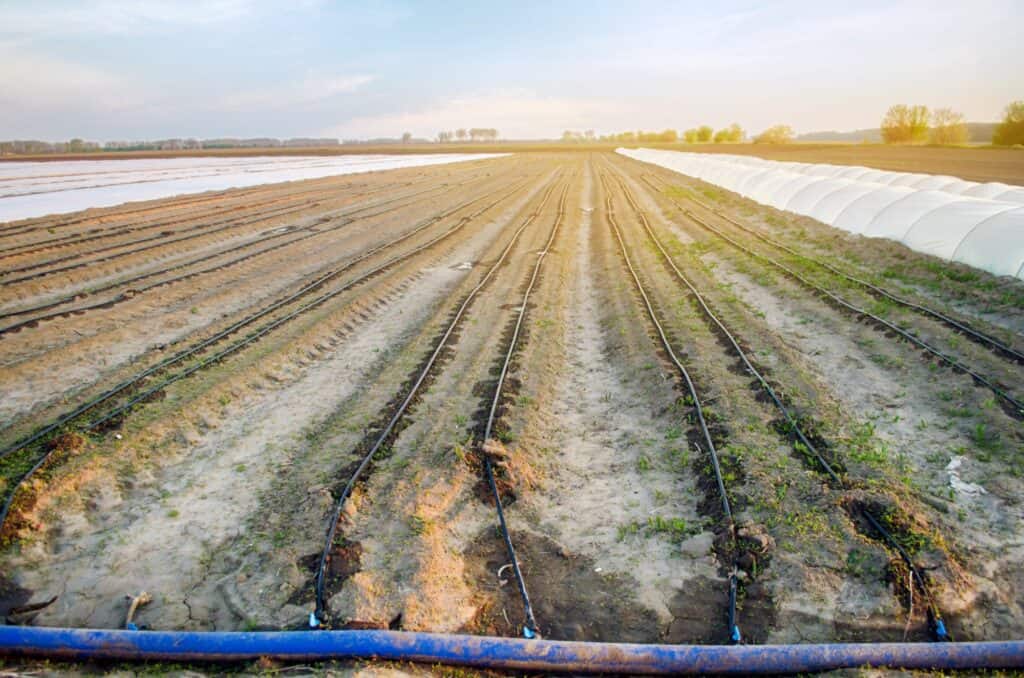
Watering Techniques and Schedule
Deep Watering Method
When it comes to watering plants, the deep watering method is a popular choice. This technique involves giving the plant a thorough soaking, allowing the water to penetrate deep into the soil.
For a 5-gallon plant, it is recommended to water until the soil is moist to a depth of at least 6 inches. This helps ensure that the roots receive enough water to thrive.
To perform the deep watering method, slowly pour water around the base of the plant, making sure to cover the entire root zone.
It is important to water slowly to allow the soil to absorb the water and prevent runoff. After watering, check the soil to ensure that it is moist to the desired depth.
Drip Irrigation System
Another effective way to water a 5-gallon plant is by using a drip irrigation system. This system delivers water directly to the roots of the plant, reducing water waste and ensuring that the plant receives a consistent supply of water.
To set up a drip irrigation system, place a soaker hose or drip line around the base of the plant. Connect the hose to a timer and set it to water for a specific amount of time each day.
This will help establish a regular watering schedule and ensure that the plant receives the right amount of water.
Determining Watering Schedule
Determining the right watering schedule for a 5-gallon plant can be tricky, as it depends on various factors such as the plant species, soil type, and weather conditions. As a general rule of thumb, it is recommended to water the plant when the top inch of soil feels dry to the touch.
To determine the right watering schedule for a specific plant, it is important to observe the plant’s behavior.
If the leaves are drooping or the soil is dry to a depth of more than 6 inches, it is a sign that the plant needs more water. On the other hand, if the leaves are yellow or the soil is constantly wet, it may be a sign of overwatering.
Watering a 5-gallon plant requires the right technique and schedule. The deep watering method and drip irrigation system are effective ways to ensure that the plant receives enough water.
Determining the right watering schedule requires observation and attention to the plant’s behavior. By following these tips, gardeners can help their 5-gallon plants thrive.
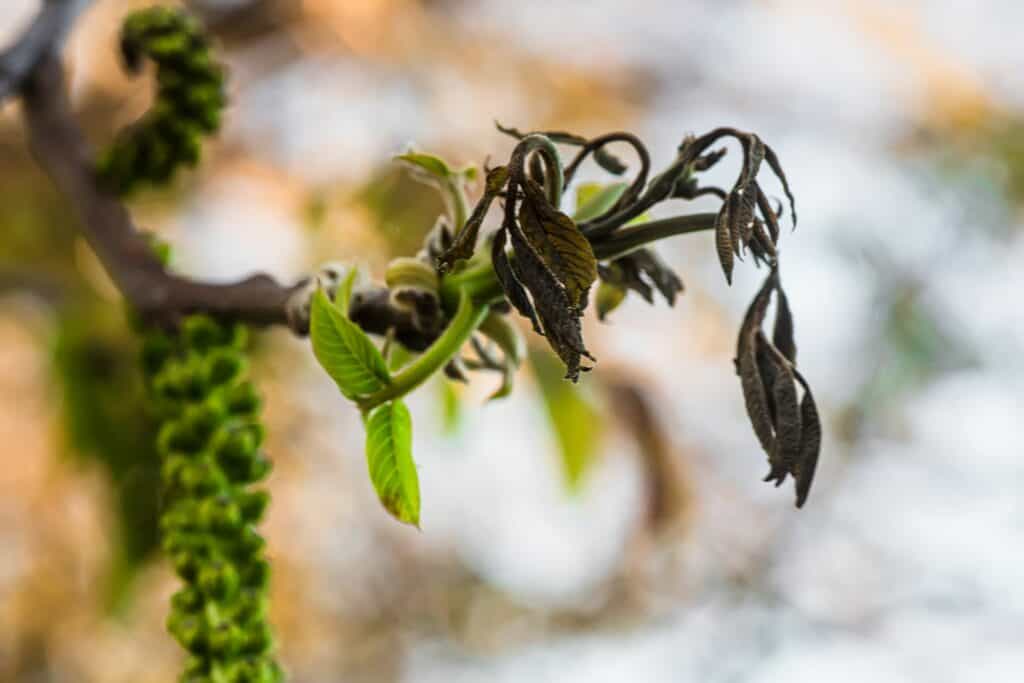
Signs of Overwatering and Underwatering
Overwatering and underwatering are two of the most common mistakes made when watering plants.
Both can cause serious damage to the plant, including root rot or drying out. It’s important to know the signs of overwatering and underwatering to prevent these issues from occurring.
Signs of Overwatering
Overwatering is one of the most common mistakes made when watering plants. It can cause the roots to rot and lead to the death of the plant. Some of the signs of overwatering include:
- Yellowing leaves: Overwatering can cause the leaves to turn yellow and fall off the plant. This is because the roots are not getting enough oxygen, which can cause them to die.
- Wilting leaves: Overwatering can also cause the leaves to wilt and become limp. This is because the roots are not able to absorb the excess water, which can cause them to become waterlogged.
- Mold or fungus: Overwatering can create a damp environment that is perfect for mold and fungus to grow. This can cause the plant to become diseased and eventually die.
If you notice any of these signs, it’s important to adjust your watering schedule and allow the plant to dry out before watering again.
Signs of Underwatering
Underwatering is another common mistake made when watering plants. It can cause the plant to dry out and become dehydrated. Some of the signs of underwatering include:
- Dry soil: Underwatering can cause the soil to become dry and hard. This can make it difficult for the plant to absorb water and nutrients.
- Wilting leaves: Underwatering can also cause the leaves to wilt and become dry. This is because the plant is not getting enough water, which can cause it to become dehydrated.
- Brown leaves: Underwatering can cause the leaves to turn brown and brittle. This is because the plant is not getting enough water and nutrients, which can cause it to become weak and unhealthy.
If you notice any of these signs, it’s important to adjust your watering schedule and make sure the plant is getting enough water. This may mean watering more frequently or adjusting the amount of water you give the plant each time.
Impact of Watering on Plant Growth and Health
Nutrient Uptake and Water
Water is essential for plant growth and health, as it is responsible for transporting nutrients throughout the plant.
When a plant receives the right amount of water, it can absorb nutrients from the soil more effectively.
However, overwatering or underwatering can negatively impact nutrient uptake and lead to nutrient deficiencies.
For example, overwatering can cause the soil to become waterlogged, which can lead to root rot and prevent the plant from absorbing nutrients effectively.
On the other hand, underwatering can cause the soil to become too dry, making it difficult for the plant to take up nutrients.
It is important to ensure that plants receive the right amount of water to promote nutrient uptake and prevent nutrient deficiencies.
The amount of water a plant needs will depend on various factors, such as the plant species, its growth stage, and the environmental conditions.
Watering and Plant Diseases
Watering can also impact plant health by affecting the development of plant diseases. Overwatering can create a moist environment that promotes the growth of fungi and other pathogens, which can lead to plant diseases such as root rot and leaf spot.
On the other hand, underwatering can weaken plants and make them more susceptible to diseases and pests.
It is important to find the right balance when watering plants to promote healthy growth and prevent the development of plant diseases.
Watering is a crucial factor in plant growth and health. Proper watering can promote nutrient uptake and prevent nutrient deficiencies, while also preventing the development of plant diseases.
It is important to understand the watering needs of different plant species and to adjust watering practices accordingly to ensure healthy growth and development.
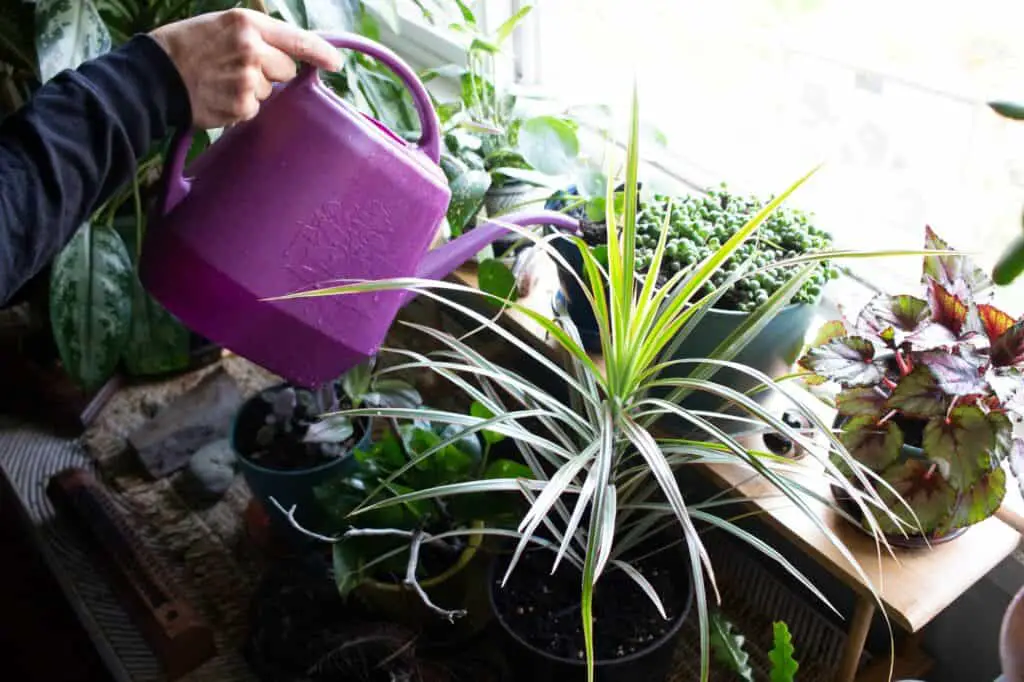
Special Considerations for Different Plant Types
Watering Flowering Plants and Fruits
Flowering plants and fruiting plants require more water than other plants. They need a lot of water to produce flowers and fruits.
When watering flowering plants and fruits, make sure to water them deeply and thoroughly. The soil should be moist to a depth of at least 6 inches.
However, be careful not to overwater them, as this can lead to root rot. It is recommended to water them once a week, but this can vary depending on the plant type, the soil, and the weather conditions.
Watering Vegetables
Vegetables need a lot of water to grow properly. They require at least an inch of water per week, either from rainfall or irrigation. When watering vegetables, make sure to water them deeply and thoroughly.
The soil should be moist to a depth of at least 6 inches. However, be careful not to overwater them, as this can lead to root rot. It is recommended to water them once a week, but this can vary depending on the plant type, the soil, and the weather conditions.
Watering Succulents
Succulents are adapted to survive in arid conditions and do not need a lot of water. Overwatering can cause root rot and kill the plant. When watering succulents, make sure to water them deeply but infrequently.
The soil should be allowed to dry out completely before watering again. It is recommended to water them once every two weeks, but this can vary depending on the plant type, the soil, and the weather conditions.
Different plant types have different water requirements. Flowering plants and fruits require more water than other plants, while succulents require less water.
When watering plants, it is important to water them deeply and thoroughly, but be careful not to overwater them. The frequency of watering can vary depending on the plant type, the soil, and the weather conditions.
Conclusion
The amount of water a 5-gallon plant needs depends on various factors such as the plant species, soil type, and environmental conditions.
Consistent watering is key to ensuring that the plant receives enough water without overwatering. It is important to avoid underwatering or overwatering the plant as both can lead to plant stress and damage.
Trial and error is a great way to determine the watering needs of a 5-gallon plant. Observing the plant’s response to watering can help determine if it needs more or less water.
Using a moisture meter can also help determine the moisture level in the soil and indicate if the plant needs watering.
It is important to note that different plants have different water requirements. For example, succulents require less water compared to other plant species.
Therefore, it is important to research the specific watering needs of the plant species before watering.
Providing the right amount of water is crucial to the health and growth of a 5-gallon plant. By following proper watering techniques and paying attention to the plant’s response to watering, one can ensure that the plant receives the right amount of water to thrive.
Frequently Asked Questions
How often should I water a 5 gallon plant?
The frequency of watering a 5 gallon plant depends on various factors such as the type of plant, soil type, and environmental conditions. However, as a general rule of thumb, it is recommended to water a 5 gallon plant once a week.
What is the recommended watering schedule for a 5 gallon plant?
The recommended watering schedule for a 5 gallon plant is to water it deeply once a week. This ensures that the water reaches the roots and promotes healthy growth.
How much water should I give my 5 gallon potted plant?
The amount of water a 5 gallon potted plant needs depends on the type of plant, soil type, and environmental conditions. However, as a general guideline, a 5 gallon plant needs approximately 5 gallons of water per watering session.
What is the ideal amount of water for a 5 gallon plant?
The ideal amount of water for a 5 gallon plant is approximately 5 gallons per watering session. However, it is important to note that the amount of water needed may vary depending on the type of plant, soil type, and environmental conditions.
How often do I need to water a 5 gallon pot?
As mentioned earlier, it is recommended to water a 5 gallon pot once a week. However, it is important to monitor the soil moisture level and adjust the watering frequency accordingly.
How much water does a 5 gallon plant require per watering session?
A 5 gallon plant requires approximately 5 gallons of water per watering session. However, it is important to ensure that the water reaches the roots and does not just sit on top of the soil. It is also important to avoid overwatering as it can lead to root rot and other plant health issues.

Hey, I’m Lisa and I’ve been an avid gardener for over 30 years. I love writing, talking and living in the garden! Feel free to connect with me on my socials below

